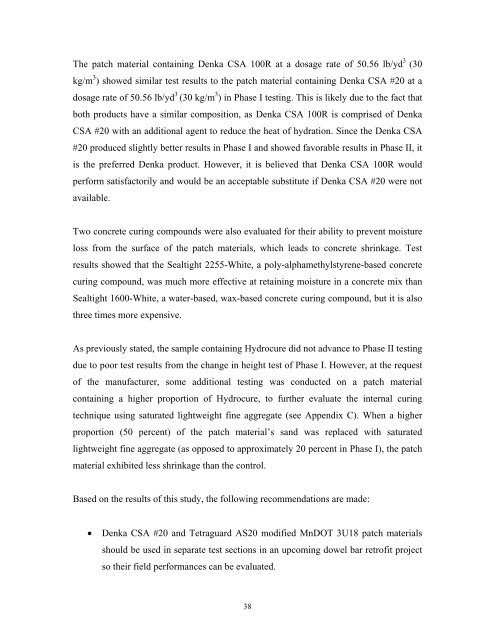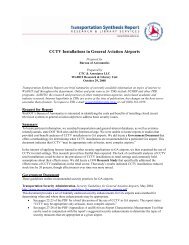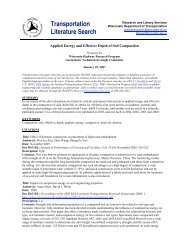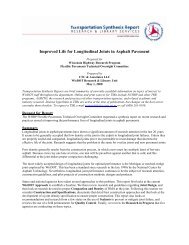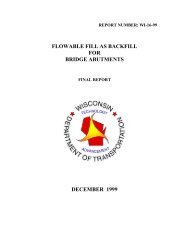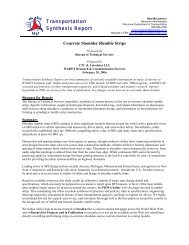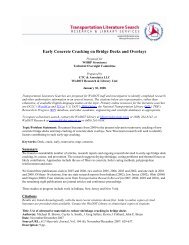DateLaboratory Testing of Portland Cement Concrete Patch Material ...
DateLaboratory Testing of Portland Cement Concrete Patch Material ...
DateLaboratory Testing of Portland Cement Concrete Patch Material ...
Create successful ePaper yourself
Turn your PDF publications into a flip-book with our unique Google optimized e-Paper software.
The patch material containing Denka CSA 100R at a dosage rate <strong>of</strong> 50.56 lb/yd 3 (30kg/m 3 ) showed similar test results to the patch material containing Denka CSA #20 at adosage rate <strong>of</strong> 50.56 lb/yd 3 (30 kg/m 3 ) in Phase I testing. This is likely due to the fact thatboth products have a similar composition, as Denka CSA 100R is comprised <strong>of</strong> DenkaCSA #20 with an additional agent to reduce the heat <strong>of</strong> hydration. Since the Denka CSA#20 produced slightly better results in Phase I and showed favorable results in Phase II, itis the preferred Denka product. However, it is believed that Denka CSA 100R wouldperform satisfactorily and would be an acceptable substitute if Denka CSA #20 were notavailable.Two concrete curing compounds were also evaluated for their ability to prevent moistureloss from the surface <strong>of</strong> the patch materials, which leads to concrete shrinkage. Testresults showed that the Sealtight 2255-White, a poly-alphamethylstyrene-based concretecuring compound, was much more effective at retaining moisture in a concrete mix thanSealtight 1600-White, a water-based, wax-based concrete curing compound, but it is alsothree times more expensive.As previously stated, the sample containing Hydrocure did not advance to Phase II testingdue to poor test results from the change in height test <strong>of</strong> Phase I. However, at the request<strong>of</strong> the manufacturer, some additional testing was conducted on a patch materialcontaining a higher proportion <strong>of</strong> Hydrocure, to further evaluate the internal curingtechnique using saturated lightweight fine aggregate (see Appendix C). When a higherproportion (50 percent) <strong>of</strong> the patch material’s sand was replaced with saturatedlightweight fine aggregate (as opposed to approximately 20 percent in Phase I), the patchmaterial exhibited less shrinkage than the control.Based on the results <strong>of</strong> this study, the following recommendations are made:• Denka CSA #20 and Tetraguard AS20 modified MnDOT 3U18 patch materialsshould be used in separate test sections in an upcoming dowel bar retr<strong>of</strong>it projectso their field performances can be evaluated.38


